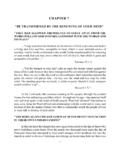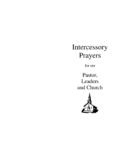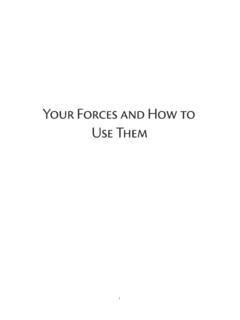Transcription of Stick and Rudder: An Explanation of the Art of Flying ...
1 2017 Mastery Flight Training, Inc. All rights reserved. 1 Highlights and Margin Notes in Wolfgang Langewieshe s Stick and rudder : An Explanation of the Art of Flying Perhaps my notes and observations will inspire you to buy your own copy and learn from this to take the copy you already own off the shelf and revisit its great lessons, just as I am doing again now. Flying LESSONS is an independent product of MASTERY FLIGHT TRAINING, INC. Pursue Mastery of Flight I earned my Private Pilot certificate in May 1985, shortly after purchasing a 1946 Cessna 120 that I used to build most of my experience toward my Commercial certificate. After separating from the Air Force I went to a local FBO in Boonville, Missouri part-time for about a month and earned my Instrument rating, my Commercial and my Flight Instructor certificate. About that same time I happened across a beat-up first edition/ninth printing (1944) copy of Wolfgang Langewiesche s Stick and rudder : An Explanation of the Art of Flying at a yard sale for 20 cents.
2 I bought it, took it home, and devoured its wisdom. See: My marked-up and well-read copy of Stick and rudder Further back, an essay that has had a life-long influence on me is Dr. Mortimer Adler s How to Mark a Book, (thank you, Mrs. Mak and your Junior English class at Kailua High School 1977-78) . Like Stick and rudder , Adler s famous essay was also written in the early 1940s. So when I discovered Stick and rudder quite accidentally in 1988, just five years out of college myself, I applied Adler s advice and marked the heck out of the Flying techniques book yellow-lining key points and making annotations in the margins not only to highlight what Langewiesche said, but also what I was thinking as I read his words. See ~ My marked-up, well-read copy of Stick and rudder has been sitting un-reviewed for many years on my home office bookshelf. I committed to re-reading and renewing this great book to review the author s wisdom, but also to see if there s anything I d add or anything I ve forgotten in my highlights and margin notes.
3 So, here are my notes on Wolfgang Langewiesche s essential classic: Stick and rudder : Part I: WINGS Chapter 1: How a Wing is Flown Page No. Highlighted Text (Langewiesche s words) My margin notes 3 Flying is difficult to learn. The flier instincts that is, his most deeply established habits of mind and body will tempt him to do exactly the wrong thing. There are situations in Flying when he who ducks, he who flinches, is lost. Pilot must know what to do, and do it, without thinking. 4 The pilot must learn not to give in to his instinct of self-preservation, but to substitute for it carefully trained carefully trained reactions 2017 Mastery Flight Training, Inc. All rights reserved. 2 reactions. Our common sense, our natural reactions mislead us simply because they are working on the basis of wrong ideas in our minds concerning the wing and how it really flies, the controls and what they really do.
4 Yoda: You must unlearn what you have learned. If we could only understand the wing clearly enough, see its working vividly enough, it would no longer seem to behave contrary to common sense; we should then expect it to behave as it does behave. We could then simply follow our impulses and instincts . Must develop air sense 5 Theory of Flight usually becomes a theory of building the airplane rather than of Flying it. It goes deeply much too deeply for a pilot s needs into problems of aerodynamics. But it neglects those phases of flight that interest the pilot most. If often fails to show the pilot the most important fact in the art of piloting the Angle of Attack, and how it changes in flight. This whole book [is] and attempt to refocus Theory of Flight. 6 Angle of Attack is in a way the theory of flight. It is almost literally all there is to flight. Knowing AoA does not make you a skilled pilot, but you can t be a skilled pilot without understanding AoA.
5 No maneuver can be fully understood unless you understand this one thing. You will be able to analyze your own mistakes. Angle of Attack has no similes in our life on the ground. 7 In most airplanes the angle of incidence is negligibly small one or two degrees or even zero. Angle of incidence will generally be disregarded; it will be assumed that the airplane is built with zero angle of incidence. Angle of Attack is the angle at which the wing meets the air. AoA is the difference between the direction the airplane is pointed and the direction it is going. In British usage, angle of incidence means what Angle of Attack means in American usage. Forget Bernoulli s Theorem. 8 The airplane keeps itself up by beating the air down. And yet decades later we still teach Bernoulli, and only Bernoulli. Does that also explain ground effect? 9 The wing keeps the airplane up by pushing the air down. It shoves the air down with its bottom surface, and it pulls the air down with its top surface; the latter action is the more important.
6 (added sometime after 1990) How does a symmetrical airfoil create lift? Question from Nick Frisch during my FlightSafety interview in 1990. My answer: Newtonian lift. In exerting a downward force upon the air, the wing receives an upward counterforce Newton s law of action and reaction. Sea-level air weighs about 2 pounds per cubic yard. Upward reactions that re equally hefty. A wing is in the last analysis nothing but an air deflector. It is an inclined plane, cleverly curved, to be sure, and elaborately streamlined, but still essentially an inclined plane. That s, after all, why that whole fascinating contraption of ours is called an air-plane. 10 This plane is inclined so that as it moves through the air, it will meet the air at an angle and thus shove it downward. This is why a jet airliner flies decidedly nose-up at high cruise altitudes: to deflect the thin air downward. Most training airplanes will maintain level flight comfortably at about two-thirds the usual cruising rpm!
7 All you have to do is hold your nose up by continuous back pressure on the Stick . Minimum Controllable Airspeed = High AoA Flying . 11 The Angle of Attack can also be defined as the difference between where the airplane points and where it goes. Ha! Exactly what I wrote earlier! An airplane always flies nose-high, pointing up a little higher than it actually goes. 2017 Mastery Flight Training, Inc. All rights reserved. 3 If it had no Angle of Attack, it would not wash the air down; and if it did not wash the air down, there would be no lift. At the slower speed, the wing catches fewer pounds of air per minute; hence, in order to keep the lift strong enough to hold the airplane up, the air must be deflected more sharply downward; to accomplish this, the wing s angle of attack must be increased. In ordinary flight, the Angle of Attack is so small that the student pilot does not realize its existence; in very slow flight, the Angle of Attack is so large that even the student pilot suddenly realizes what goes on.
8 Not just student pilots (unless we are all students). 12 At such high Angle of Attack the control feel is rather different from that of cruising flight. The controls feel different for each different Angle of Attack (or, what is the same thing, for each different speed). In this very slow flight your margin of safety over the stall is much reduced; but as long as you do realize it and act accordingly, there s nothing wrong with that. In the course of ordinary flight training, the student experiences very slow flight rarely, and only for moments at a time. He does not stay in this condition; on the contrary, n all these cases, he tries to get out of it, either trying to stall the airplane, as in landings and stall practice, or else by trying to recover to normal flight, as after a premature nose-high take-off. Hence he may come to think that an airplane cannot maintain this flight condition steadily.
9 If he believes that, he misses the main point of the whole art of Flying . (added 2016) Yet the changes to slow flight in the Airmen Certification Standards. 13 The entire process of the landing is essentially one of slower and still slower flight, flight at higher and still higher Angle of Attack; all the time exercising very accurate control over the flight path. Yet, at the time when the student first tries landings, he has practically no experience at all in flight at medium or high Angle of Attack. Thus he must learn three things all at , that the airplane can fly in this fashion; second, how it responds to the controls in this kind of flight; third, how to judge its flight path so that contact with the ground will be smooth. (added some time after 1990) This is important in type transition training as well. He has to get acquainted with flight at high Angle of Attack under the most difficult condition, that is, near the ground.
10 And he has to get acquainted with the ground under the most difficult condition, that is, while Flying at high Angle of Attack. In stall practice, too, the ship goes through the whole range of Angles of Attack rather fast. Such practice may even reinforce the ideas that, whenever the nose is high, a stall will inevitably result. It is worth your while to take your ship up once to a safe altitude and fly it a few minutes in this fashion, maintaining altitude in nose-high flight with very little power. Continue your flight experiment. Open your throttle a bit and then do whatever is necessary to maintain a strictly level flight path. You will relax some of your back pressure against the Stick , and the ship will then no longer climb, but the nose will come down lower, and the ship will speed up. 14 Cruising airplane now actually goes where its nose is pointing. It might seem as if there were now no Angle of Attack as if it now maintained flight by some principle other that which keeps it up in mushing flight.






![Home [www.sunshinebible.org]](/cache/preview/a/c/e/c/0/4/a/e/thumb-acec04ae04dcb74987ffec37902fbee7.jpg)
